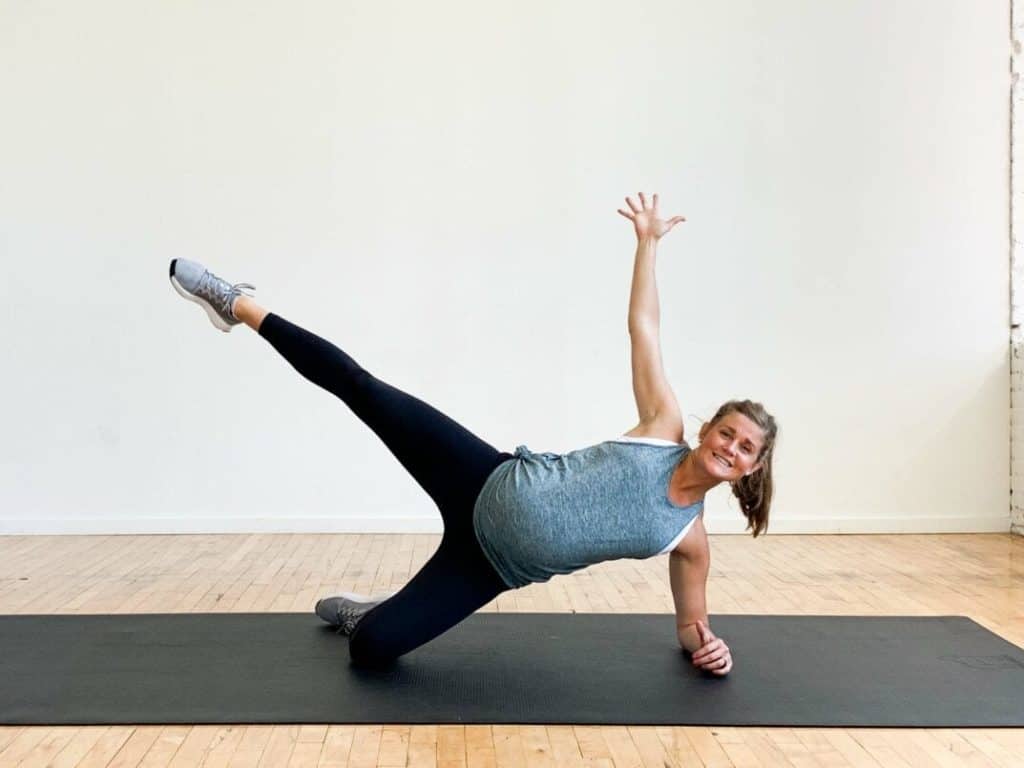
Table of Contents
As and when you reach closer to your D-day, the core during pregnancy goes through various changes to accommodate the growing baby. This makes most pregnant moms wonder about the exercises they could practice to keep them in shape, as well as, help speed the recovery post-birth.
Given that having great abdominal muscles or a six-pack during pregnancy isn’t something you can strive for, you are perhaps welcome to take a few safe steps towards maintaining your fitness that helps keep your core strong, as per the safe ab exercises agreed by your practitioner. Adding on, these exercises are also beneficial as they prevent the risk of back pain, and help in speedier labor.
However, certain physical changes take place in your body that does not allow you to practice the same core muscles routine as you did before your pregnancy. Then what exercises are great for the abs when pregnant?
To help you with this answer, Parenthood Bliss has curated the article below that helps you with the top 6 best exercises to strengthen your core during pregnancy. But before that, let’s understand whether the ab exercises are safe during pregnancy.
Are Abdominal Exercises Beneficial and Safe During Early Pregnancy?
Most ab exercises during pregnancy are considered safe for the ab muscles, however, they must be reviewed and agreed upon by the health care provider. This is because irrespective of the maximum being comfortable and safe there are a few that could hinder your pregnancy, so a green light from the practitioner is of utmost importance.
As per research, it is observed that there is no link between moderate to vigorous exercise that could result in early pregnancy loss. Also, the baby bump that only shows up by the second trimester doesn’t make most exercises difficult to carry.
So, with the ok of the doctor, it is safe to exercise the abs workout in your entire pregnancy as per the modifications. It not only strengthens your abdominal muscles but also supports the pelvic organs with pelvic floor exercises as the baby bump starts to get bigger. Adding on, strong abs help alleviate the pressure on the back, provide good posture, help increase control in labor, and help recover faster after giving birth.
How Do Your Abs React to Ab Exercises During Pregnancy?
By the end of the first trimester of your pregnancy, you will notice a ridge in your belly region that runs from the bottom of your breastbone to the middle of your belly. This ridge is known as a diastasis recti, a gap between the right and left sides of the abdominal muscle that affects almost half of the moms-to-be. At times, it widens by a few centimeters with the growing belly, putting tension on the area. Women carrying multiples or in those who have in the past had several pregnancies are prone to this separation.
However, by the 12th week make sure to consult your doctor regarding the diastasis recti, and as it does not develop until later in the pregnancy, you must get it checked periodically. And, if you notice even the slightest gap in your abdomen, winding more than three finger-widths, this could be a sign for you to modify the abdominal exercises during and after pregnancy.
Also note, having a diastasis recti is not a thing to stress upon as it tends to heal on its own postpartum. However, make it a point to consult your doctor in either case to prevent any foreseen dangers in or after your pregnancy.
As far as the ab exercises are concerned, in cases of a normal and uncomplicated pregnancy, the moms can get kicked with the exercises 24 hours post-vaginal delivery. However, in the case of a C-section, you’ll need to wait for about a few weeks or until the incision heals and the practitioner allows you to.
On the other hand, in the case of a diastasis recti, you might need to wait for about a month or two post-delivery, as practicing crunches, knee-to-chest, and full sit-ups might lest the risk of an injury.
Can Pregnant Women Do Planks?
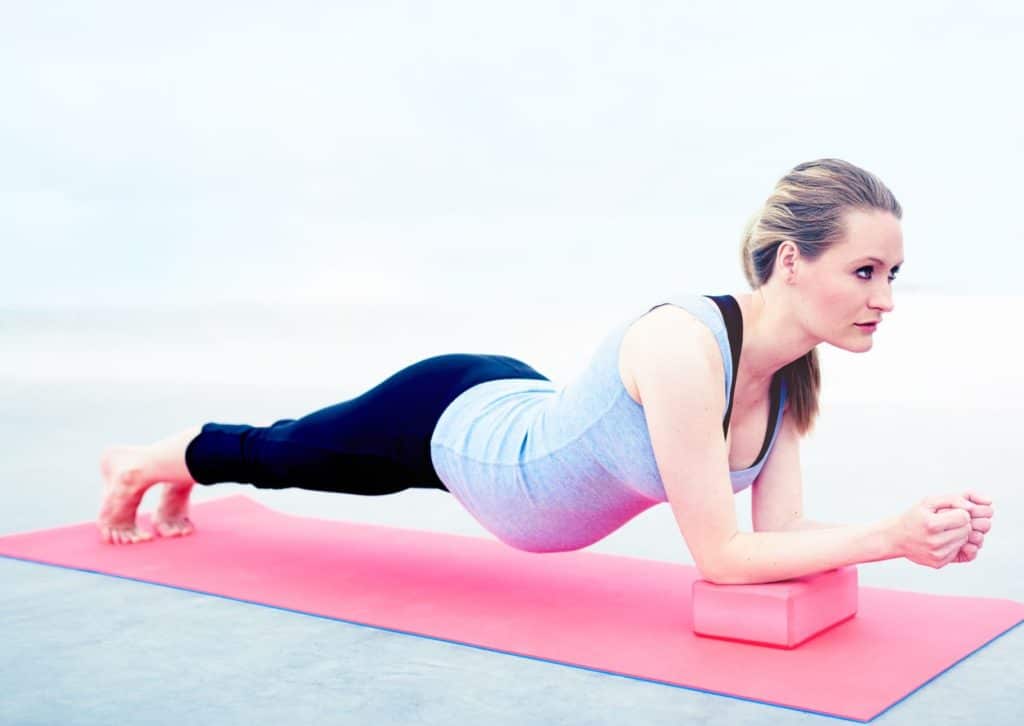
Yes, the moms-to-be can do planks and they are safe to practice throughout pregnancy. This is because static and endurance-based exercises, such as side plank, are considered to be ideal for expecting women as they strengthen the abs, as well as, the back.
Planks also put less pressure on the spine compared to dynamic exercises, like crunches. But, as each body is different, it is important to listen to your body and know if the exercises are causing any strain, if so, hold the plank for shorter sets of 5 to 10 seconds. If it still causes tension, make sure to keep the knees slightly bent or rested on the floor.
Now, let’s get to the core of the top best 6 ab exercises for pregnant women to practice. These are accompanied by steps for you to easily follow and do not forget to take a deep breath while you are at it.
6 best Safe Ab Exercises to Practice During Pregnancy
1) Standing Crunches
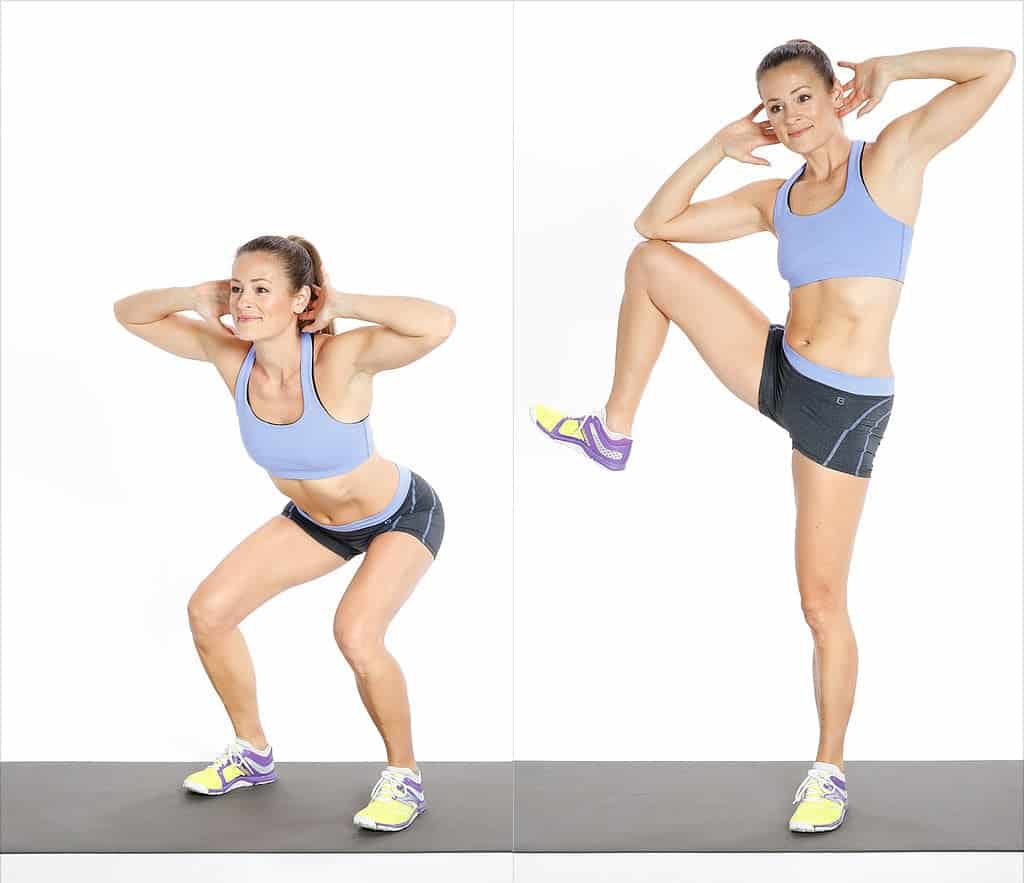
- Start by being in a standing position with the feet and hip-width apart.
- Draw the belly button towards the spine and tuck the pelvis slightly by bringing your fingertips to your ears.
- Now, crunch forward and squeeze the muscles of the abdomen.
- Once down, slowly release with control, completing one rep.
2) Pelvic Tilt

- Stand with your back against a wall and try to relax your spine keeping it in a straight line and not too much on the right or left side.
- Now, inhale while pressing the small region of the lower back against the wall.
- Exhale as you release, completing one repetition.
3) Prone Stretch and Tuck or bird dog
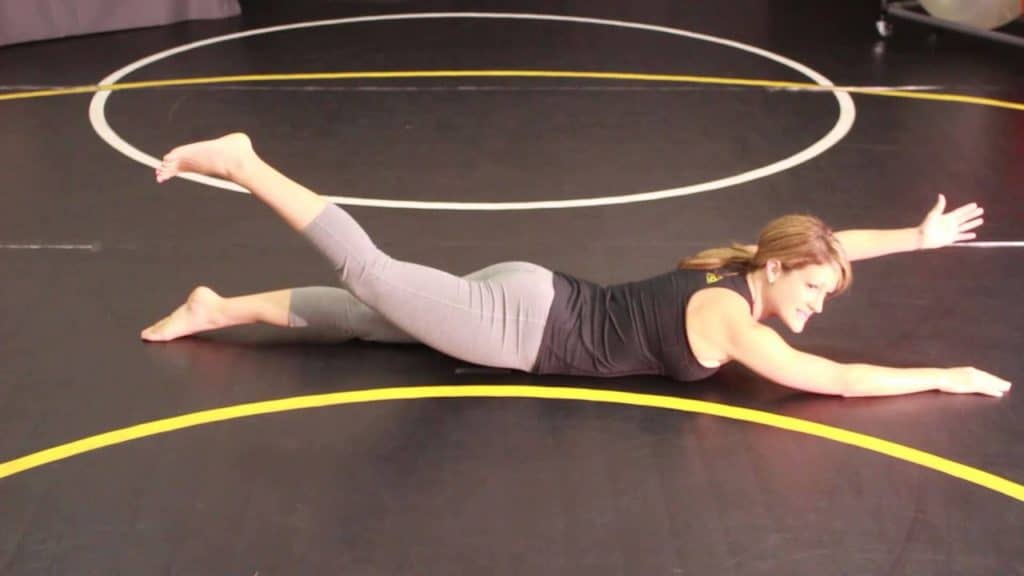
- Get on all fours to start.
- Now, extend the left arm, straight in front of you with the right leg stretched behind you.
- As you do so, make sure you engage a strong core as you draw the extended elbow and knee toward the core.
- Release when in full extension and continue.
- Make sure to complete the same number of reps on the opposite side (right arm and left leg) while maintaining core strength.
4) Heel Slides
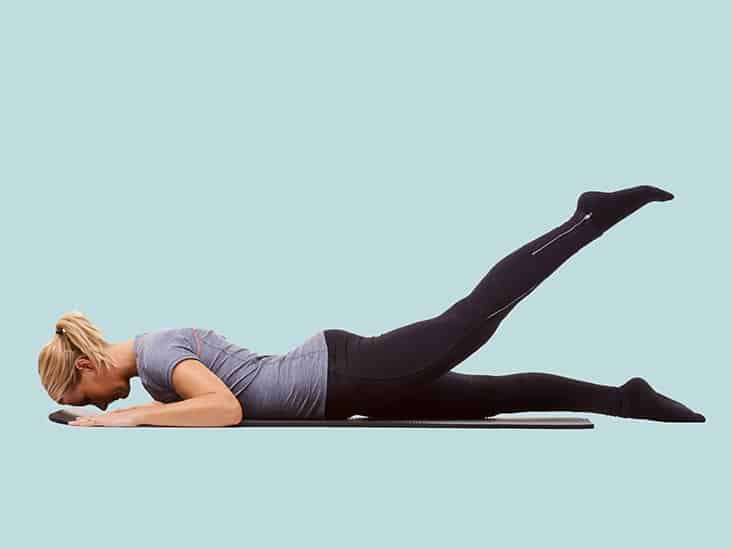
- Lie on your back with the upper back and head above your heart.
- Now, place your palms on the ground to get enough support.
- Next, bend both your knees as you bring the feet towards your spine or butt.
- Extend one leg at a time, and keep the heel above and close to the ground
- Now, bring it back to the starting position.
- Continue the same with alternate sides and make sure to now arch your back.
5) Single Heel Drops
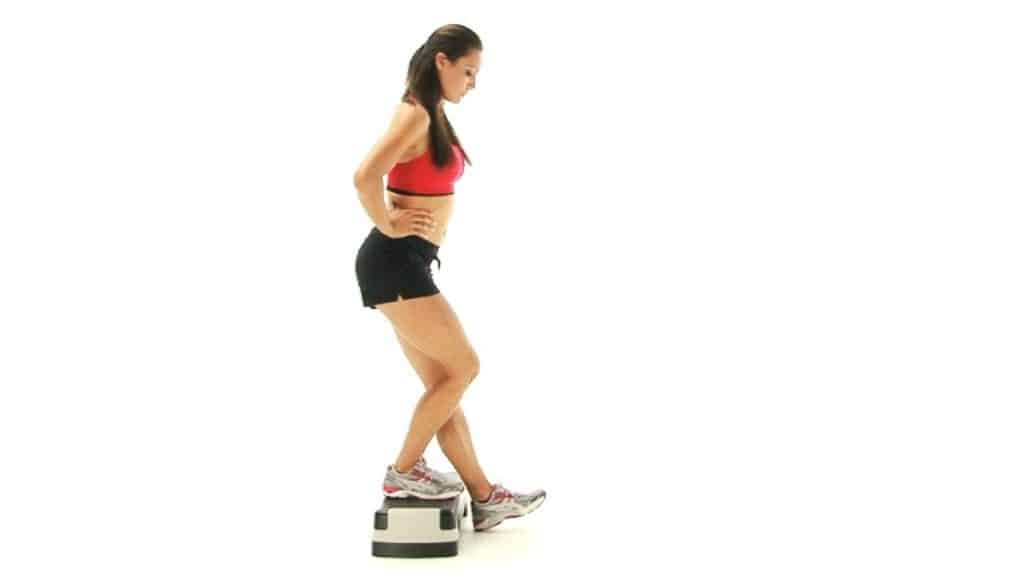
- To start, lie on your back with the upper back and head above the heart.
- Now, place the palms on the ground to get support and make it pregnancy safe.
- Bend your knees to 90 degrees at the hips and lift them off the ground so they are in line with the knees.
- While keeping control, try to engage your core strength to lower one heel.
- Gently, touch the ground before you raise it back up in the starting position.
- Repeat and continue with the opposite side and alternate legs.
6) Side-Lying Knee Lifts

- Lie on the right side and extend your right arm over your head as it rests on the arm.
- Now, place the left palm on the ground, in front of your chest to get support.
- Bend the knees to 90 degrees and stack them as you bring them forward.
- Engage the core and lift one or even both the knees up off the ground, if possible. Or, do one knee at a time.
- Release while you have control.
- Repeat the exercise on the opposite side for 30 seconds each.
What Abdominal Exercises Must Be Avoided During Pregnancy?
During your pregnancy, try to avoid ab exercises that require you to do full sit-ups, double leg lifts, avoid contortions or bending over backward moves as well, and other exercises for that matter that pull or push the core muscles in the abdominal. Also, make it a point to breathe steadily while you practice exercises during pregnancy to ensure a steady flow of oxygen for both you and your baby.
By the end of the first trimester, you will be recommended to avoid exercises like crunches as your belly grows, even if it was to be done with the help of an exercise ball. This is because the enlarged uterus could compress the vena cava (the vein that carries blood to the heart) which could be dangerous for both you and your baby. You can try alternative positions, like lying on one side, standing upright, or on all fours like you do when practicing the cat-cow posture.
To Conclude:
It doesn’t matter if you are in the first, second, or third trimester of your pregnancy. But, if you practice listening to your body, as well as, to the advice of your practitioner, the pregnancy-safe exercises will only do good to your body. However, if you experience pain or discomfort, it is advised to stop immediately and consult your practitioner. To know what exercises are good to practice and what are not, refer to the article above.
Have a safe and strong core pregnancy!
Safe Ab Exercises During Pregnancy FAQs
1) When should you stop doing abs when pregnant ?
2) Is it OK to do ab exercises while pregnant ?
3) How can I keep my abs strong during pregnancy ?
Sources:
Reviewed By:

Esha Chainani - Obstetrician and Gynaecologist
Dr. Esha Chainani is an Obstetrician, Gynaecologist, and laparoscopic surgeon who aims to break the stigma around women’s health by advocating an inclusive and open practice of obstetrics and gynecology and an author of several internationally published research papers and health articles in the media like the Swaddle.
She also founded Premaa, a non-profit to reduce maternal morbidity and eventual maternal mortality by providing lower-income pregnant women living in urban areas with cell phone access through an app that can feature an entire section about contraception as well for a whole gamut of reproductive health.
A panel for multiple health sessions including with the UN, USAID, BMC, gender at work, and multiple non-profit organisations, and is on the advisory panel of the South Indian medical students association.









